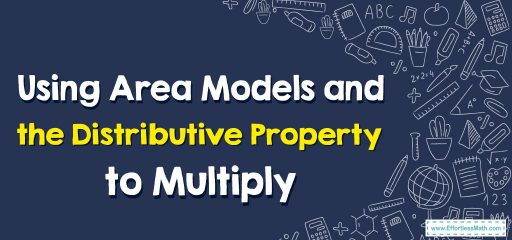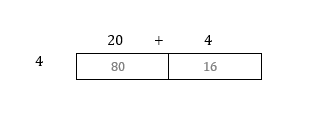How to Use Area Models and the Distributive Property to Multiply?
Multiplying using area models and the distributive property is a visual and conceptual way to understand multiplication.

A Step-by-step Guide to Use Area Models and the Distributive Property to Multiply
Here are the steps to use these methods:
Step 1: Understand the Area Model:
An area model is a rectangle that represents the two numbers being multiplied.
The length of the rectangle represents one factor, and the width represents the other. The area of the rectangle represents the product.
Step 2: Break down the Numbers:
To use the distributive property, you need to break down the numbers into smaller parts.
Step 3: Use the Distributive Property:
Once you have broken down the numbers, you can use the distributive property to multiply.
Step 4: Draw the Area Model:
To use the area model, draw a rectangle with the length and width representing the two factors. Then divide the rectangle into smaller rectangles to match the parts from the distributive property.
Step 5: Multiply and Add:
Finally, multiply each part separately and then add the products together to get the final product.
Using Area Models and the Distributive Property to Multiply – Example 1:
Use the area model to multiply \(24 × 4\).
Solution:
Step 1: Break down the numbers: \(24 = 20 + 4\)
Step 2: Use the distributive property: \(24 × 4 = (20 × 4) + (4 × 4)\)
Step 3: Draw the area model with smaller rectangles:

Step 4: Multiply and add:
\(20 × 4 = 80\)
\(4 × 4 = 16\)
\(80 + 16 = 96\)
Therefore, \(24 × 4 = 96\).
Related to This Article
More math articles
- 4th Grade Wisconsin Forward Math Worksheets: FREE & Printable
- How to Mastering the Art of Function Transformations
- The Ultimate FSA Algebra 1 Course (+FREE Worksheets)
- The Ultimate ACT Math Course (+FREE Worksheets & Tests)
- How to Prepare for the Pre-Algebra Test?
- Top 10 PSAT/NMSQT Math Practice Questions
- How to Rearranging a Multi-Variable Equation
- How to Use Benchmark Fraction? Benchmark Fraction Definition
- What are the types of math?
- 10 Most Common 3rd Grade MAP Math Questions

















What people say about "How to Use Area Models and the Distributive Property to Multiply? - Effortless Math: We Help Students Learn to LOVE Mathematics"?
No one replied yet.